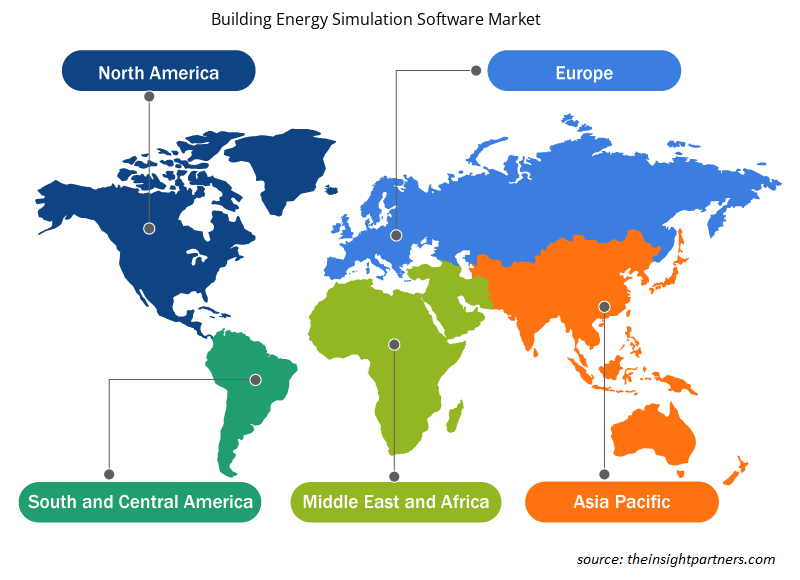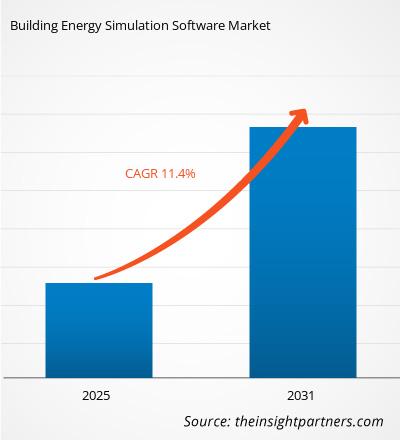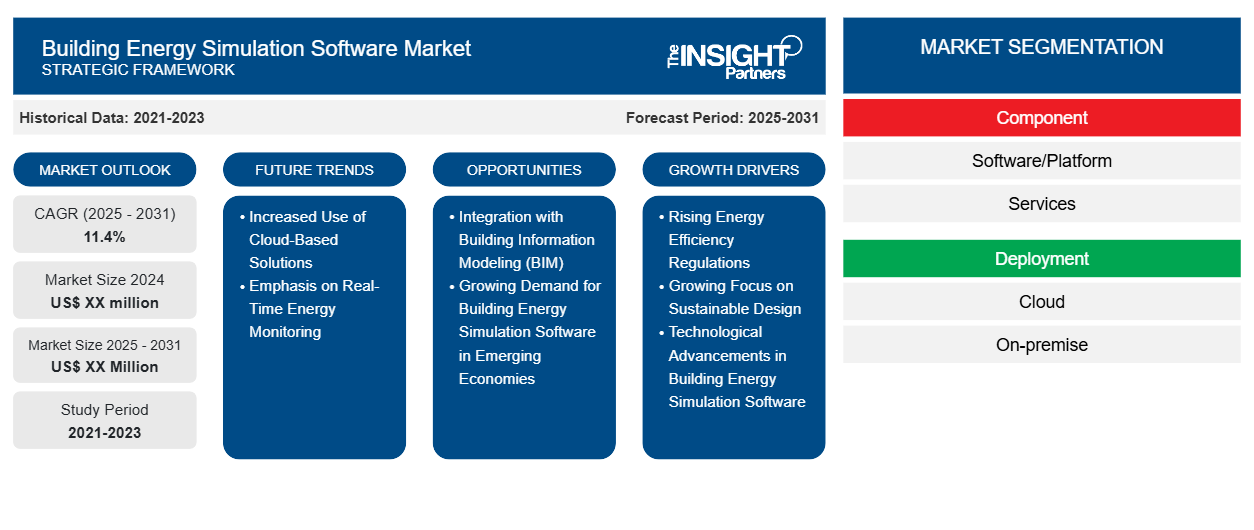建物エネルギーシミュレーションソフトウェア市場は、2023年から2031年にかけて11.4%のCAGRで成長し、市場規模は2023年のXX百万米ドルから2031年にはXX百万米ドルに拡大すると予想されています。
レポートは、コンポーネント(ソフトウェア/プラットフォーム、サービス)、展開(クラウド、オンプレミス)、エンドユーザー(所有者、ビルダー、研究者)別にセグメント化されています。グローバル分析は、地域レベルと主要国でさらに細分化されています。レポートでは、上記の分析とセグメントの値をUSDで提供しています。
報告書の目的
The Insight Partners によるレポート「建物エネルギー シミュレーション ソフトウェア市場」は、現在の状況と将来の成長、主な推進要因、課題、機会を説明することを目的としています。これにより、次のようなさまざまなビジネス ステークホルダーに洞察が提供されます。
- テクノロジープロバイダー/メーカー: 進化する市場の動向を理解し、潜在的な成長機会を把握することで、情報に基づいた戦略的意思決定が可能になります。
- 投資家: 市場の成長率、市場の財務予測、バリュー チェーン全体に存在する機会に関する包括的な傾向分析を実施します。
- 規制機関: 市場の濫用を最小限に抑え、投資家の信用と信頼を維持し、市場の完全性と安定性を維持することを目的として、市場における政策と警察活動を規制します。
建物エネルギーシミュレーションソフトウェア市場のセグメンテーション
成分
- ソフトウェア/プラットフォーム
- サービス
展開
- 雲
- オンプレミス
エンドユーザー
- 所有者
- ビルダー
- 研究者
地理
- 北米
- ヨーロッパ
- アジア太平洋
- 南米と中央アメリカ
- 中東およびアフリカ
地理
- 北米
- ヨーロッパ
- アジア太平洋
- 南米と中央アメリカ
- 中東およびアフリカ
要件に合わせてレポートをカスタマイズする
このレポートの一部、国レベルの分析、Excelデータパックなど、あらゆるレポートを無料でカスタマイズできます。また、スタートアップや大学向けのお得なオファーや割引もご利用いただけます。
-
このレポートの主要な市場動向を入手してください。この無料サンプルには、市場動向から見積もりや予測に至るまでのデータ分析が含まれます。
建物エネルギーシミュレーションソフトウェア市場の成長要因
- エネルギー効率規制の強化: 世界中の政府は、気候変動に対処し、エネルギー消費を削減するために、より厳しいエネルギー効率規制と建築基準を導入しています。この規制圧力により、建築家、エンジニア、ビル管理者がこれらの基準に準拠するためのツールを求めており、建物エネルギー シミュレーション ソフトウェアの採用が進んでいます。シミュレーション ソフトウェアを使用することで、関係者はエネルギー使用量を分析し、非効率性を特定し、規制要件を満たすか上回る建物を設計できます。持続可能な建設方法の需要が高まるにつれて、建物エネルギー シミュレーション ソフトウェアの市場は大幅に拡大すると予想されます。
- 持続可能な設計への注目の高まり: 建物の環境への影響に対する意識が高まり、持続可能な設計手法への注目が高まっています。建物エネルギー シミュレーション ソフトウェアを使用すると、専門家は設計段階で建物のエネルギー パフォーマンスを評価できるため、材料、システム、レイアウトに関する意思決定を効率化できます。このソフトウェアは、エネルギー効率の高い建物の作成を容易にすることで、持続可能性に向けた世界的な移行をサポートします。環境に優しい設計を優先する組織が増えるにつれて、建物エネルギー シミュレーション ツールの需要は高まり続けます。
- 建物エネルギー シミュレーション ソフトウェアの技術的進歩: アルゴリズムの改善やモデリング機能の強化など、建物エネルギー シミュレーション ソフトウェアの技術的進歩が市場の成長を牽引しています。これらの革新により、エネルギー消費とパフォーマンスのより正確な予測が可能になり、設計上の決定と運用効率が向上します。さらに、シミュレーション ツールに人工知能 (AI) と機械学習 (ML) を統合することで、膨大なデータ セットを分析できるようになり、ソフトウェアの予測機能が強化されます。テクノロジーが進化し続けるにつれて、建物エネルギー シミュレーション ソフトウェア市場は、採用と投資の増加から恩恵を受ける可能性があります。
建物エネルギーシミュレーションソフトウェア市場の将来動向
- クラウドベースのソリューションの利用増加: 建物エネルギー シミュレーション ソフトウェア市場における注目すべき傾向は、クラウドベースのソリューションへの移行です。クラウド テクノロジーにより、アクセス性、コラボレーション、スケーラビリティが向上し、チームはさまざまな場所からプロジェクトに共同で取り組むことができます。この傾向は、複数の関係者がリアルタイムでデータにアクセスして共有する必要がある大規模プロジェクトに特に役立ちます。クラウドベースのシミュレーション ツールは、高価なハードウェアとソフトウェアのメンテナンスの必要性を減らすため、あらゆる規模の組織にとってより魅力的です。リモート ワークが普及するにつれて、クラウドベースのエネルギー シミュレーション ソリューションの需要は今後も増え続けるでしょう。
- リアルタイムのエネルギー監視の重視: リアルタイムのエネルギー監視への傾向は、建物のエネルギー シミュレーション ソフトウェアの状況を変えつつあります。モノのインターネット (IoT) テクノロジの統合により、建物管理者はエネルギー消費をリアルタイムで監視できるようになり、即時の調整と最適化が可能になります。この機能により、分析用の正確で最新のデータが提供され、エネルギー シミュレーション ソフトウェアの有効性が高まります。組織が業務効率の向上とエネルギー コストの削減を求めるようになるにつれて、リアルタイムのエネルギー監視をサポートするソフトウェアの需要がさらに高まり、市場におけるイノベーションが促進されます。
建物エネルギーシミュレーションソフトウェアの市場機会
- ビルディング インフォメーション モデリング (BIM) との統合: 建物エネルギー シミュレーション ソフトウェアとビルディング インフォメーション モデリング (BIM) の統合は、市場の成長に大きなチャンスをもたらします。BIM は、建物のライフサイクル全体にわたって建物データを包括的に視覚化および管理することを可能にし、エネルギー シミュレーション ツールはエネルギー パフォーマンスに関する洞察を提供することでこのプロセスを強化できます。これらのテクノロジを組み合わせることで、建築家やエンジニアはエネルギー効率を考慮して建物の設計を最適化し、より持続可能な結果をもたらすことができます。BIM の採用が拡大し続けるにつれて、互換性のあるエネルギー シミュレーション ソフトウェアの需要も高まり、ソフトウェア開発者にチャンスが生まれます。
- 新興経済国におけるビルエネルギー シミュレーション ソフトウェアの需要の高まり: ビルエネルギー シミュレーション ソフトウェア市場は、都市化とインフラ開発が加速している新興市場で成長が見込まれています。アジア太平洋やラテン アメリカなどの地域の国々が新しい建設プロジェクトに投資するにつれて、エネルギー効率の高いビル設計のニーズが高まっています。ソフトウェア プロバイダーは、これらの市場の特定のニーズに対応するカスタマイズされたソリューションを提供することで、この機会を活用できます。エネルギー効率と持続可能な慣行に対する意識が高まると、これらの地域でビルエネルギー シミュレーション ソフトウェアの需要がさらに高まります。
建物エネルギーシミュレーションソフトウェア市場の地域別洞察
予測期間を通じて建物エネルギー シミュレーション ソフトウェア市場に影響を与える地域的な傾向と要因は、Insight Partners のアナリストによって徹底的に説明されています。このセクションでは、北米、ヨーロッパ、アジア太平洋、中東、アフリカ、南米、中米にわたる建物エネルギー シミュレーション ソフトウェア市場のセグメントと地理についても説明します。

- 建物エネルギーシミュレーションソフトウェア市場の地域別データを入手
建物エネルギーシミュレーションソフトウェア市場レポートの範囲
| レポート属性 | 詳細 |
|---|---|
| 2023年の市場規模 | XX百万米ドル |
| 2031年までの市場規模 | XX百万米ドル |
| 世界のCAGR(2023年~2031年) | 11.4% |
| 履歴データ | 2021-2022 |
| 予測期間 | 2024-2031 |
| 対象セグメント |
コンポーネント別
|
| 対象地域と国 |
北米
|
| 市場リーダーと主要企業プロフィール |
|
建物エネルギーシミュレーションソフトウェア市場のプレーヤー密度:ビジネスダイナミクスへの影響を理解する
建物エネルギー シミュレーション ソフトウェア市場は、消費者の嗜好の変化、技術の進歩、製品の利点に対する認識の高まりなどの要因により、エンド ユーザーの需要が高まり、急速に成長しています。需要が高まるにつれて、企業は提供内容を拡大し、消費者のニーズを満たすために革新し、新たなトレンドを活用し、市場の成長をさらに促進しています。
市場プレーヤー密度とは、特定の市場または業界内で活動している企業または会社の分布を指します。これは、特定の市場スペースに、その規模または総市場価値と比較して、どれだけの競合相手 (市場プレーヤー) が存在するかを示します。
建物エネルギーシミュレーションソフトウェア市場で事業を展開している主要企業は次のとおりです。
- 4M SA
- オートデスク株式会社
- バティア建設
- カーメルソフトウェア株式会社
- キャリア株式会社
免責事項:上記の企業は、特定の順序でランク付けされていません。

- 建物エネルギーシミュレーションソフトウェア市場のトップキープレーヤーの概要を入手
主なセールスポイント
- 包括的なカバレッジ: レポートでは、建物エネルギー シミュレーション ソフトウェア市場の製品、サービス、タイプ、エンド ユーザーの分析を包括的にカバーし、全体的な展望を提供します。
- 専門家による分析: レポートは、業界の専門家とアナリストの深い理解に基づいてまとめられています。
- 最新情報: このレポートは、最新の情報とデータの傾向を網羅しているため、ビジネスの関連性を保証します。
- カスタマイズ オプション: このレポートは、特定のクライアント要件に対応し、ビジネス戦略に適切に適合するようにカスタマイズできます。
したがって、建物エネルギーシミュレーションソフトウェア市場に関する調査レポートは、業界のシナリオと成長の見通しを解読し理解する道の先導役となることができます。いくつかの正当な懸念があるかもしれませんが、このレポートの全体的な利点は欠点を上回る傾向があります。
- 過去2年間の分析、基準年、CAGRによる予測(7年間)
- PEST分析とSWOT分析
- 市場規模価値/数量 - 世界、地域、国
- 業界と競争環境
- Excel データセット
最新レポート
関連レポート
お客様の声
購入理由
- 情報に基づいた意思決定
- 市場動向の理解
- 競合分析
- 顧客インサイト
- 市場予測
- リスク軽減
- 戦略計画
- 投資の正当性
- 新興市場の特定
- マーケティング戦略の強化
- 業務効率の向上
- 規制動向への対応























 無料サンプルを入手 - 建物エネルギーシミュレーションソフトウェア市場
無料サンプルを入手 - 建物エネルギーシミュレーションソフトウェア市場